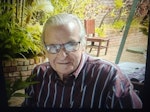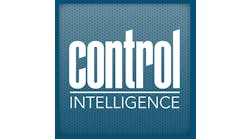Designing industrial enclosures and cabinets involves careful consideration of various factors to ensure the protection of sensitive equipment, comply with safety regulations and meet the specific needs of the industrial environment. A good example is how enclosures are designed for the control of centrifugals in the sugar industry.
From the selection aspect, one of the biggest mistakes engineers make is to install equipment in an enclosure that is too small. This is a very bad error as this can potentially lead to equipment overheating and, ultimately, failure. The size of the container must be carefully chosen to provide ample air circulation and heat dissipation.
Get your subscription to Control Design’s daily newsletter.
Let’s look at the various reasons for installing sensitive equipment inside industrial enclosures and consider the most suitable type depending on the application.
Leading the selection process is the aspect of environmental protection, or protection from the environment. In this area, to protect sensitive equipment from the often-not-so-clean environment, choose enclosures that provide effective sealing against dust and debris, especially in environments with high levels of particulate matter.
Additionally, one needs to consider water resistance—the level of protection against water ingress, particularly in settings where equipment may be exposed to liquids or high humidity. It’s advisable to check the ingress-protection (IP) ratings to ensure that no unwanted matter is allowed to penetrate the enclosure seals.
Then there’s the very important consideration of temperature control. When equipment is either exothermic—giving off heat—or endothermic—taking in heat from the surroundings—suitable temperature regulation will be necessary. Otherwise, equipment may become overheated and fail. Ensure that the enclosure design allows for effective heat dissipation or includes features such as ventilation, fans or air conditioning to maintain optimal operating temperatures for enclosed equipment.
Read more of Charles' columns here: Charles Palmer, Automation Basics columnist
To further enhance the life of the enclosed equipment we need to think about the possible need for ventilation and cooling. Here, we can design in ventilation openings; these are used to prevent the accumulation of heat while still maintaining environmental protection. Use filters to minimize dust ingress. Lastly, if there is still potential for overheating, install an additional cooling system. This can comprise fans or heat exchangers, especially for enclosures which house heat-generating equipment.
For enclosures to be able to survive, their material of construction needs to be scientifically chosen. For corrosion resistance, choose materials that resist corrosion, especially in harsh industrial environments where exposure to corrosive substances is a concern. Stainless steel and polycarbonate are common choices for corrosion-resistant enclosures.
Finally, in the material selection category, consider impact resistance. Interpret the level of impact resistance required based on the potential for physical damage in the industrial setting.
For electromagnetic compatibility (EMC), overcome electromagnetic fields through shielding. Design enclosures with proper electromagnetic shielding to prevent interference and protect sensitive electronics from electromagnetic radiation. Then there’s grounding; ensure effective grounding to minimize the risk of electromagnetic interference (EMI) and ensure compliance with EMC standards.
When selecting any industrial enclosure, the access and maintenance aspects require the necessary considerations. It’s of little use installing such an enclosure out of reach or in such a cramped space that maintenance is not simple, if at all possible.
Consider the actual door and panel design. One needs to plan for easy access to internal components through well-designed doors and panels. Hinges, latches and locks should be robust and secure. Also think of modularity and its potential advantages. Consider modular designs that facilitate maintenance and upgrades without compromising the integrity of the entire enclosure.





